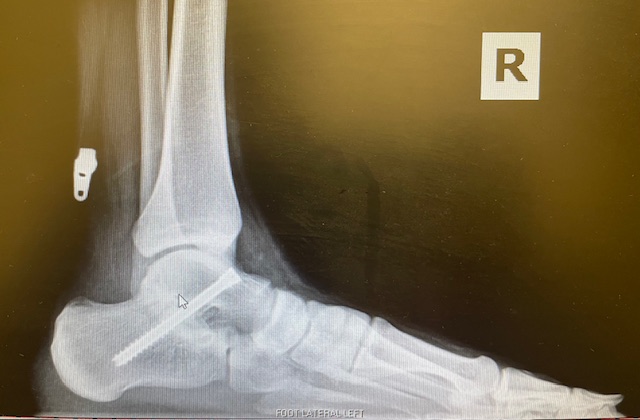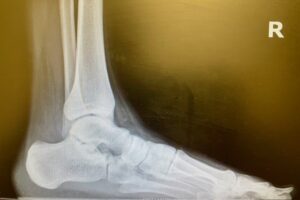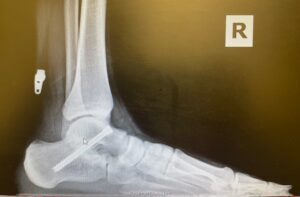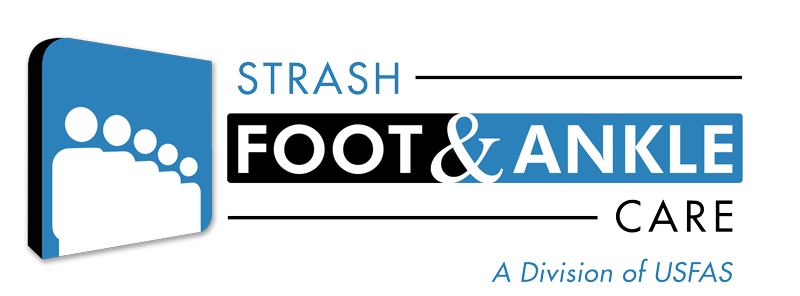
16 Apr Tarsal Coalitions
Recently in our practice Dr. Strash and Dr. Espino have been treating a lot of patients with tarsal coalitions. Interesting name. But what exactly is a tarsal coalition?
A tarsal coalition is described as a partial or complete union of two or more tarsal bones. The tarsal bones are the bones in the middle of our feet below the ankle. A tarsal coalition will usually occur in the earlier stages of life around 8-16 years old. The coalition can cause pain and other pathologic symptoms to the foot making it very painful to walk and run. The most common ages for coalitions are between 3-5 years old (talo-navicular), 8-12 years old (calcaneo-navicular) and 12-16 years old (talo-calcaneal). Two of most common coalitions are calcaneo-navicular and talocalcaneal which is the fusion of the calcaneus to the navicular and the talus to the calcaneus respectively. There is not one determining factor as to why some people get coalitions, however the majority are congenital while some are acquired.
Tarsal coalitions may be completely asymptomatic and incidental findings. However, pain is the most common finding in all coalitions. Pain is usually aggravated by walking over rough, uneven terrain with prolonged standing and with athletic activity. X-rays are a helpful tool in determining the extent of the coalitions. Common signs seen on x-ray are the ant eater nose sign or comma sign seen on lateral view with calcaneal-navicular coalitions and this is a hyperplastic calcaneal process with anterior elongation. Talo-calcaneal coalitions are usually diagnosed on lateral x-ray film by seeing a “c”-sign or halo sign representing a circular sclerotic enhancement of the talar dome and inferior margin of the sustentaculum tali. X-rays however are not always the best diagnostic study to determine the osseous/nonosseous nature of the collation and therefore CT and MRI are very helpful in determining this.
The management of coalitions usually starts with conservative treatment and then moves on to surgical treatment options if pain does not resolve conservatively. Conservative treatment includes injection therapy, immobilization, offloading, orthotics, bracing, shoe modifications, padding, physical therapy and anti-inflammatory medications. If coalitions are caught early enough resection of coalitions may be a solution, however resection may not always be the solution and in some instances an arthrodesis (fusion) of the involved joint may be necessary to relieve pain. These are usually reserved for skeletally mature patients when all other treatments have failed.
Tarsal coalition can be a VERY painful condition – if you have pain and want to stay active, don’t wait until it’s too late – give our offices a call. As always, it’s our number one priority to help place your best foot forward, again!



